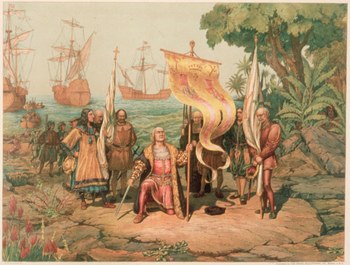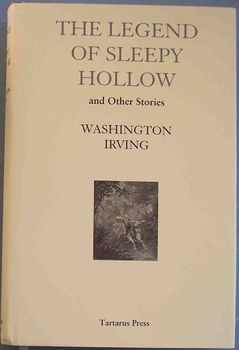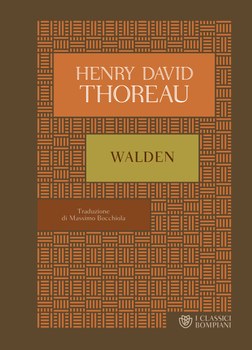The “unaligned stars” of a culture: Canada, the US and Nature
Ginevra Bianchini
“Over hill and under tree Through lands where never light has shone By silver streams that run down to the sea Under cloud, beneath the stars Over snow and winter’s morn I turn at last to paths that lead home” - The Last Goodbye, Billy Boyd
As Billy Boyd sings in The Last Goodbye, there always comes a time when we feel the need to go home, to that warm and welcoming place in which we cherish our most precious treasures and intimate affections. Home is the physical place that firstly represents the roots of humanity, secondly of society and then of a culture itself. For as much as a person, in the stream of life, may choose to put distance between their origins and their current life -whilst rejecting them- they will always remain in their blood, despite how much this person wants to eliminate or hide them.
1. Nature and Culture in Canada
2. Colonizing and colonized cultures
3. Nature and Culture in the US
4. From Martin Eden to Eric Packer: the evolution of the self-made man
5. Imagining Nature
6. The question of the 'Other'
7. Conclusions
8. Bibliography
The relationship that people have with both their ancient and contemporary culture can vary, but usually stays between two extremes: on the one hand the obsessive study and exaltation of their ancestors, often arriving to different types of imitatio and aemulatio, for instance neoclassicism; on the other hand a complete rejection of their fathers, which may lead to the ex-novo creation of new canons, as happened with romanticism. Therefore, one may wonder why it is so difficult for human beings to have a balanced relationship with their own culture and origins. Icons like Jack Kerouac, author of the famous On the Road -the book symbol of the Beat Generation of the US '50s-, placed themselves as gallant opponents of the so-called "literary classicism".
Even Leonard Cohen with his novel Beautiful Losers published in the 60s, takes us through a dysfunctional story in some respects very similar to the one narrated by Kerouac, with a Joycean-like stream of consciousness technique. However, the Canadian writer, as well as his American colleague, guides the reader through a narrative which is clearly influenced and inspired by his predecessors. In fact, as the wise Italian writer Andrea Camilleri says, "literature is made on literature". Intertextuality is a major component of modern literature, whether it is conscious or not. Cultural and social conditionings are inevitable.
1. Nature and Culture in Canada
Both Cohen and his fellow countrymen writers, for example Emily Carr, look for a link with their cultural origins through art, particularly in this case study, while experimenting with many different forms of artistic expression, such as music for Cohen and painting for Carr. Their being Canadians has made the relationship with nature and landscape very special and different than the one Americans have with the same elements. For a Canadian, relating to nature is the first step towards feeling part of the national community, characterized by a melting pot of races that makes amalgamation more challenging: consequently, nature and landscape become tools to achieve cultural and social unity.

Nature is experienced and felt as the bearer of a divine quality, an idea that in many ways is similar to the concept of divinity typical of ancient Greek civilizations: indeed, all natural events are interpreted as manifestations of the gods, often represented in iconography with animal features. This "confrontation" with nature occurs both for the "new" Canadians as well as for the natives, who are the other element with which the population is culturally faced. With time, but especially with the English and French colonization, this link between nature and divinity has evolved into the belief that the Christian God is immanent in nature.
Yet, while approaching the contemporary age, there has been a disappearance of the divine within cultural memory. This evolution has led to a secularization of society and a shift in beliefs to more practical semantic areas, although always leaving traces behind in the creation of a national culture. In fact, landscape is still an uncontrollable and unpredictable force which in many ways seems to resemble Leopardi's vision of nature as a mother and stepmother at the same time, with an immense power to create and destroy at will -a characteristic easily attributable to the divine. Similarly, Emerson, although not Canadian, perfectly understands this concept:
“In the woods we return to reason and faith. There I feel that nothing can befall me in life, -no disgrace, no calamity, (leaving me my eyes) which nature cannot repair. […] I become a transparent eye-ball; I am nothing; I see all; the currents of the Universal Being circulate through me; I am part or particle of God.” (Ralph Waldo Emerson, Nature, The Project Gutenberg, July 17, 2009, (29.11.2017), Chapter 1).
Hence, this beautiful nature, though tacitly aggressive and dangerous, enters the Canadian national image, thanks to the pure relationship that the so-called Indian natives had with it. Unfortunately, they have largely been ousted and exterminated by the new colonizing culture. Both Emily Carr and Leonard Cohen, although coming from an environment that could be defined as "English", feel different and alone in a culture still in the making: they undertake the path of the "rebels", even though they are yet anchored to a typically European way of thinking and acting. For as much as they get into contact with the native society and its view of the world and try in every way to understand it, they will never be true Indios. Their effort is remarkable and undoubtedly their merits enormous, but unfortunately it is impossible for a person of any community to operate in complete detachment from their own civilization and culture of origin.
2. Colonizing and colonized cultures
Cultures can mix, of course, but, as mentioned above, a mark of their origins remains. Additionally, there always seems to be a predominant and colonizing culture. Indeed, in North America, even though very different religions and cultures still coexist, Europeans and especially Englishmen operated a violent conquest and a systematic suppression of others' ideas. While conquering lands, it is clear that the strongest ethnic group (using the term with the sense that Stuart Hall has given to it) - often more technologically advanced than the conquered one - imposes its cultural setting. This group usually considers itself to be superior to the other culture and has the aim to create political, societal and economic unity within its new territories, in order to make them easier to control.

It frequently appears less problematic to govern territories inhabited by people united in ideas that have come from the same "bosom", rather than keeping under the yoke those who have different views of the world. A very famous example of this type of conquest has been given by the Romans. Their forte consisted in foreseeing how much the absorption of elements from other cultures would have later enriched their original cultural background. This strengthened them and helped develop a less discriminating environment, despite many times still tending to the suppression of religious, political and cultural minorities that did not merge. And we also must not forget that their society was highly based on class diversity and slavery, which still created unequal relations throughout the whole population of the empire.
Nonetheless, according to the setting of colonialism, there are innate differences between cultures. This idea came from the settlers mistaking diversity for inferiority and technological progress for superiority. It was a very strong statement and quite difficult to confute, if not through brute force. To offer an example, a South African tribe, when one of its members is found guilty of something, has the custom of surrounding for two days the person who has made the mistake and reminding him of all the good he has done in his life. Indeed, they believe that every person is innately good and errors are just a cry for help. Can we consider this population to be inferior to us because it has a rather different approach to crime than the traditional western one?
Hence, hiding behind these excuses of humanitarian acculturation of underdeveloped populations, European colonists have carried out the conquest of North America, obliterating with their technological strength not only the native culture but also people in the flesh. A glimpse of the history of the American conquest is given by Fenimore Cooper’s masterpiece The Last Of The Mohicans, which, although set in Canada, provides a general and universal idea of the physical and moral violence to which the natives were subjected in North America. Colonial power then, in a short period of time, annihilated that of Indios, replacing their culture and civilization with their European one. Yet, the imported culture, always keeping as its backbone a European influence, evolved in two separate directions in Canada and in the United States, due to the territorial differences from Europe. After having analyzed the Canadian examples, I will now focus on the US.
3. Nature and Culture in the US
The relationship that the newborn American culture matured with nature diverged from the Canadian one, surely influenced by a dissimilar political history from that of Canada, which remained under the rule of the British crown until mid 1800’s, while the United States became an independent nation after the War of Independence (1775-1783). Therefore, they went through industrialization with a different approach if we compare it to a country like Canada that was subjected to a "foreign" power. As a matter of fact, in the American cultural image, industrialization has had a huge impact and led to a kind of "colonization of the former colonizer".
That first society of puritanical sort, which had a much closer and respectful relationship with nature, and whose symbolic myth was that of the "Farmer James" and of the "City upon a hill", was bypassed by the power of the industrial progress. The latter created a very different society, no longer focused on the importance of community and human solidarity, but on the individuality of man, money and personal profit.

The first writer who confronts us with this reality is Washington Irving, especially with his short story “The Legend of Sleepy Hollow”: at the center of the narrative we have Ichabod Crane, the personification of greed and compulsive accumulation, the two main characteristics of industrial men. Through a vivid and lengthy description, full of biting irony, Irving presents this vile man, the protagonist: he lives off of the town trustful people, who are very hospitable and helpful to him. He is clearly a parasite that tries to invade the small town with his urban ideals, which he considers to be visionary and advanced. Sleepy Hollow here is the symbol of tradition and deep connection with nature, which hides it and protects it under a "drowsy, dreamy influence".
This small natural stronghold manages to survive and drive away Ichabod thanks precisely to its cultural background. However, this optimistic and confident solution is retracted by the writer in a later essay, in which he admits the final defeat of the peaceful rural society: Ichabod has now won. Industrialization and once again technological superiority, not cultural -since we have established that there is none-, has required a change of society and of the natural scenery, invading it with metropolises. It laid the foundations for a new civilization, which has reached its culmination in our contemporary world. Irving, while presenting Ichabod, excessively describes his sensory organs:
“His head was small, and flat at the top, with huge ears, large green glassy eyes, and a long snipe nose […]” (Irving, The Legend of Sleepy Hollow, in The Project Gutenberg, - last day of consultancy: June 25, 2008).
His mouth, nose, ears, eyes are enormous, as if with those he wished to eat, swallow everything, conquer and destroy at once, just as an industrial man, only for his own personal well-being. He never fattens, he remains thin and with a shapeless body, never satisfied with any pleasure. He exploits everything, even his own teaching job through which he can shape young minds not yet formed, in order to make them social eaters like him.
4. From Martin Eden to Eric Packer: the evolution of the self-made man
Even the character of Martin Eden, the protagonist of Jack London’s homonymous novel could be mistaken for a man like Ichabod, a social climber, eager for knowledge, power and wealth. Indeed, with his strength, stubbornness and determination he can obtain it all, while simultaneously trying to repudiate his humble origins as a sailor. We now go back to the starting point, the refusal of the homeland, exemplified in Martin Eden’s actions throughout the novel.
However, the story culminates in the reunification with the life roots of the hero and the man himself: the suicidal death at sea of Martin, told with a breathtaking description by the author, symbolizes his return to his origins as a sailor. He has realized how illusory is the life that he has built inside the industrial and capitalist society of the twentieth century. He drowns and lets his breath be taken away immersed in water, in nature, in that element that had first given him life. In this case, nature is invested with some sort of savior role of a man from an empty life, which was concentrated solely on monetary gain and oppression of others, without any emotional bond that is not based on economic compromise.
“[…] Life was ill, or, rather, it had become ill –an unbearable thing. “That dead man rise up never!” That line stirred him with a profound feeling of gratitude. It was the one beneficent thing in the universe. When life became an aching weariness, death was ready to soothe away to everlasting sleep. But what was he waiting for? It was time to go.” (Jack London, Martin Eden, The Project Gutenberg, November 25, 2004, (29.11.2017), Chapter 46).
Martin then might look like a loser because of his tragic end, but in fact he is the only one who comes out as a winner from the narrated events, because, even though he chooses to take his own life, he ends up being the only person to understand what kind of diseased society most people live in.

Wealth and power are not the real sources of happiness, but a healthy relationship with his origins and purity of spirit, which he in fact possessed; the same purity that, in the end, turns out to be precisely the key element that prevents him from living another minute in such conditions. Culture and knowledge then become double-edged weapons, because they give us the power to overcome but also be overwhelmed by a lifestyle commonly considered right, but that instead hides gangrenous wounds under many elegant clothes.
In a more recent time, a character like Eric Packer can be seen as a new Martin Eden, a ruthless billionaire of twenty-eight and the protagonist of the novella Cosmopolis from the Italo-American writer Don DeLillo. Cosmopolis has also been cinematically adapted by Canadian director David Cronenberg. The narration takes place in just one day and involves this young man going through a distraught Manhattan at the limits of credibility. He observes it seemingly unresponsive and detached, while de facto he is an integral part of that scenario, much as he tries to hide in his precious limousine. "A specter is haunting the world. the specter of capitalism" is the famous phrase taken from Marx and adapted, written in capital letters also in the novel and which embodies the meaning of the whole piece of work.
“You tried to predict movements in the yen by drawing on patterns from nature. Yes, of course. The mathematical properties of tree rings, sunflower seeds, the limbs of galactic spirals. […] I loved the cross-harmonies between nature and data. You taught me this. The way signals from a pulsar in deepest space follow classical number sequences, which in turn can describe the fluctuations of a given stock or currency. You showed me this. How market cycles can be interchangeable with the time cycles of grasshopper breeding, wheat harvesting. You made this form of analysis horribly and sadistically precise.” (Don DeLillo, 2003:87).
The kind of society that London tells us about in his novel has evolved until the present day, creating a new kind of community, not only national but global. The growth of capitalism and its worldwide spread have also led to a huge homologation on all levels, which in some ways can be positive, but also kills cultural diversity, which should instead be evolving, and those historical differentiations given by the wide range of people’s origins. This has led to an endless race between the various countries, whose intent is always to become more and more economically powerful, in order to impose their civilization and cultural setting on the others, with the aim of shaping a world inhabited by identical individuals, as if they were serial industrial products themselves.
5. Imagining Nature
Nature has been exploited and turned into a huge tourist attraction, capable of arousing momentary lyrical feelings that can, or actually must, be put aside in front of the hectic life of the metropolis, the new "wilderness", perhaps even more dangerous than the real one. It has got to the point that man no longer possesses the capability to deal with unfavourable living conditions, when these do not have all the typical comforts of an upper-middle-western lifestyle. This phenomenon is summed up in the events -that recall from afar Thoreau's autobiographical work Walden- which really happened to Christopher McCandless, the protagonist of Sean Penn's movie Into the Wild, adapted from Jon Krakauer's novel.

This young man, after graduating, chooses to escape the consumerist society to rediscover himself in relation to wild nature and a simpler life. Therefore, he embarks on a journey through the US without a set destination, reaching out for a “postcard” image of nature, which in turn ends up killing him. This utopia concerning the pristine landscape has spread in our society through peaceful bucolic images, rooted in ancient authors such as Theocritus and Virgil, but reshaped by mass culture, for example with Walt Disney Pictures animated movies like Fantasia, Pocahontas and so on. Nature has been reduced to a myth, by which man is secretly intimidated and overwhelmed. Many people today do not even realize what nature is because city parks are a kind of artificial nature created by man himself, always faithfully following the idea of an ordered and tamed nature.
6. The question of the 'Other'
In Canada and in the United States then, the 'Other' with which the colonists had to negotiate with was not only the native population of the place, but also the diverse landscape and nature, which ended up turning into a reflecting mirror, also distorting the soul of a very fragile culture. The individual began looking for himself and his identity in the blurry relationship with the landscape and the boundless wilderness impossible to enclose, encode and comprehend, especially through the "nominalization" process of the unknown.
Nature becomes a kind of vector to establish a new connection with their own culture and society, and also with those other cultures the settlers are forced to confront. The problem of the 'Other' still persists within the American culture and is being investigated and questioned in both literature, contemporary cinema and with endless work in criticism of various kind. Taking into account a more trivial example, such as the 2008 movie Gran Torino by Clint Eastwood, we see quite obviously the ambiguity and contradictions that still plague American culture and society. Eastwood is, indeed, a film director characterized by a strong patriotism, but at the same time also somehow open minded. In any case, it remains difficult to understand if the other is considered a person to all effects or just a faceless cultural enemy.
7. Conclusions
It is clear that putting boundaries on cultural and then individual freedom may prove to be very complicated to accomplish. Who has the right to decide where person’s freedom begins and that of another ends? At what price is it allowed to pursue our "right to happiness"?
“Un mutamento di senso è intervenuto in questi anni anche nell’uso delle parole libertà e liberalismo che parimenti nel senso comune si sono sempre di più venute identificando come assenza di regole e di limiti alla libertà individuale e specificatamente alla libertà di mercato […]” “A change in meaning has occurred in recent years also in the use of the words freedom and liberalism which likewise in the common sense has more and more come to identify as an absence of rules and limits to individual freedom and specifically to market freedoms”. (Portelli, 2004:190).
Certainly, suppressing other cultures in favor of a dominant one is not a solution. A mass culture more easily accessible should have raised the overall educational level, however never as before has this one seemed to have fogged the minds and have made us forget those ancestors, from which Polybius wisely advised to take example from in order to build truly solid policies. Even if we have economic unity and we all possess the same mass produced objects, we must not renounce our origins in the name of an equality that is merely superficial and not actually authentic. Losing the roots of a culture is like losing a mother, and because of that, an increasing detachment is occurring with nature, the Mother of all things. We are now all Leopardian "Icelanders", stupidly fleeing the One who is everywhere, on which we walk even if covered with asphalt. However, deep down in our tainted consciences, we know that, sooner or later, she will reach us.
8. Bibliography
Carr, Emily, The House Of All Sorts, Vancouver, Douglas & McIntyre, 2004
Cohen, Leonard, Beautiful Losers, Toronto, McClelland & Stewart Ltd., 1966
DeLillo, Don, Cosmopolis, New York, Simon & Schuster, 2003
Emerson, Ralph Waldo, Nature, The Project Gutenberg, July 17, 2009, <http://www.gutenberg.org/files/29433/29433-h/29433-h.htm>, (29.11.2017)
Irving, Washington, Sleepy Hollow. An Essay, New York, Milestone Productions, 2013
Irving, Washington, The Legend of Sleepy Hollow, The Project Gutenberg, June 25, 2008, <https://www.gutenberg.org/files/41/41-h/41-h.htm>, (29.11.2017)
Fink, Guido et al, Storia della letteratura americana, Firenze, Sansoni Editore Nuova, 1991
Lombardo, Agostino (edited by), Le Orme di Prospero. Le Nuove letterature in lingua inglese: Africa, Caraibi, Canada, Roma, La nuova Italia Scientifica, 1995
Portelli, Alessandro, Canoni Americani. Oralità, letteratura, cinema, musica, Roma, Donzelli Editore, 2004
Portelli, Alessandro, Il re nascosto. Saggio su Washington Irving, Roma, Bulzoni, 1979
Todorov, Tzvetan, The Conquest of America: The Question of the Other, University of Oklahoma Press, 1999